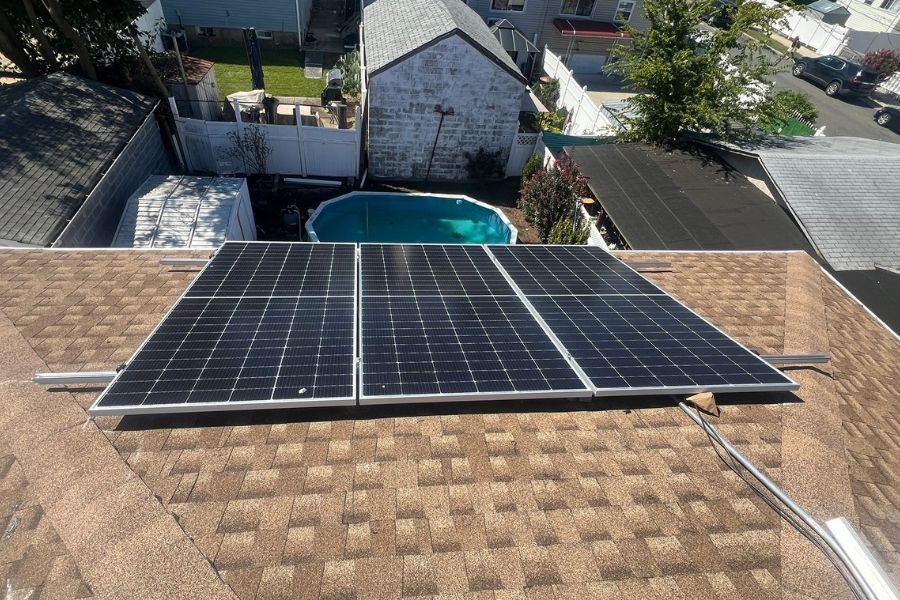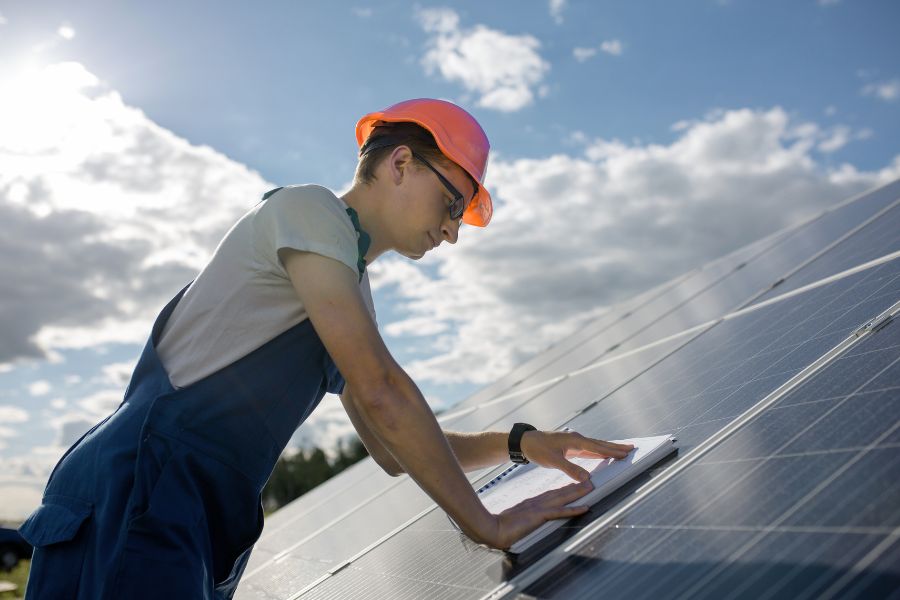When most Brooklyn residents picture rooftop solar, they think of slim black panels soaking up the sun and cutting electric bills. But few stop to ask: where do these systems come from, and what happens when they’ve reached the end of their life?
Understanding the full life cycle of solar technology matters-especially in New York, where aggressive climate goals are fueling rapid adoption. Knowing what goes into making, installing, operating, and eventually recycling panels helps homeowners make better decisions about both their energy and their environmental impact.

1. Manufacturing: Where It All Begins
Every panel starts with quartz, refined into high-purity silicon. These wafers are layered with glass, framed in aluminum, and wired with copper and silver to carry electricity.
It’s an energy-hungry process, requiring high heat and significant electricity. Yet panels quickly pay back that footprint: within one to three years, they generate more energy than it took to create them. Considering most last 25-30 years, that’s decades of clean power for a relatively small upfront impact.
Advances in production are also making panels lighter, more durable, and more efficient. For dense urban areas like Brooklyn, where rooftop space is limited, these improvements mean homeowners can get more energy from the same roof area. Some newer models also perform better in partial shade, which is helpful for buildings surrounded by taller structures.
Manufacturers are also experimenting with more sustainable materials and processes. For example, some factories are reducing water use during production or sourcing recycled aluminum and glass. These incremental improvements help reduce the overall environmental footprint of each unit.
2. From Factory to Roof: Transportation and Installation
Once built, panels travel through global supply chains-sometimes produced in the U.S., other times imported from Europe or Asia. In New York, they’re delivered to distribution centers and installed across the city.
Brooklyn buildings bring unique challenges: flat or angled rooftops, shared walls, and historic structures mean installations often require creative planning. Skilled crews know how to work with these conditions, sometimes using small cranes or lifts for multi-story projects.
Transporting panels does carry a carbon cost, but it’s minimal compared to the decades of emissions-free electricity they provide.
When considering the overall price of a system, homeowners should factor in not just the panels themselves, but installation complexity, roof condition, and local permitting. Incentives and tax credits in New York can help offset these expenses, making the switch more affordable.
Installation quality also plays a big role in long-term performance. Panels that are slightly misaligned or poorly secured can produce less energy and face higher wear over time. That’s why experienced contractors, particularly those familiar with urban rooftops, are so important.
3. The Longest Chapter: Operation and Maintenance
After installation, panels enter their most productive phase- quietly generating power with little need for attention.
- Lifespan: 25-30 years on average, sometimes longer
- Performance: Output declines by about 0.5% per year, so even after 20 years most systems are still producing around 90% of their original power
- Impact: A typical Brooklyn household offsets 3-4 tons of carbon dioxide annually, the equivalent of planting around 100 trees every year
Upkeep is simple. Panels may need occasional cleaning after snow or heavy dust, and periodic roof checks are recommended. Many systems now include monitoring apps so homeowners can track production in real time.
Choosing a system with good warranties is also important. Most local providers offer coverage of 20-25 years for performance and equipment. This protects homeowners from defects and ensures that the system continues to generate energy as expected.
Homeowners can also optimize their energy output by pairing their panels with smart inverters, battery storage, or energy management apps. For example, batteries can store excess electricity generated during sunny hours for use at night, further reducing reliance on the grid and lowering monthly bills.
4. End of Life: Recycling and Second Chances
After 25-30 years, panels reach the end of their peak performance. So what happens next?
Right now, most panels in the U.S. are treated as electronic waste, but recycling is becoming a bigger focus. Panels contain valuable materials-glass, silicon, copper, aluminum, silver- that can be recovered. Some types also include trace elements that need careful disposal.
This is where a knowledgeable installer matters. Beyond setup, the best providers guide homeowners on proper recycling or disposal options when the time comes. Planning ahead ensures that panels don’t end up in landfills unnecessarily and that reusable materials go back into production.
Recycling Efforts in New York
New York is working to expand recycling programs and policies for solar equipment.
- NYSERDA solar panel initiatives fund research into safe disposal and new uses for retired panels.
- Extended Producer Responsibility (EPR) laws could soon require manufacturers to help fund recycling programs.
- Community projects are exploring how older panels can power schools, affordable housing, or shared neighborhood systems—giving panels a second life instead of sending them to landfills.
These programs not only reduce waste but also support the city’s transition to a circular economy. Older panels that are no longer suitable for individual homes could be repurposed for community energy projects, benefiting households that cannot install panels themselves due to building restrictions or cost.
Why the Life Cycle Matters
Looking at the full journey-from factory to recycling-shows how much impact each system has:
- Carbon benefits: Even when accounting for production and shipping, panels drastically cut lifetime emissions.
- Financial benefits: Lower energy bills over decades, plus state and federal incentives, help offset initial costs.
- Circular economy: Recycling keeps valuable materials in use and reduces waste.
For Brooklyn residents, investing in rooftop solar means more than just savings-it’s a contribution to a cleaner, more sustainable city.
Looking Ahead: Solar in New York’s Future
New York’s target of 70% renewable energy by 2030 means rooftop solar will only become more common. With that growth comes a responsibility to ensure panels are responsibly maintained and recycled.
For homeowners, the message is clear: solar is a long-term investment in your household, your community, and the environment. Choosing solar installers in your area ensures your system is installed well, maintained easily, and responsibly retired when the time comes.

